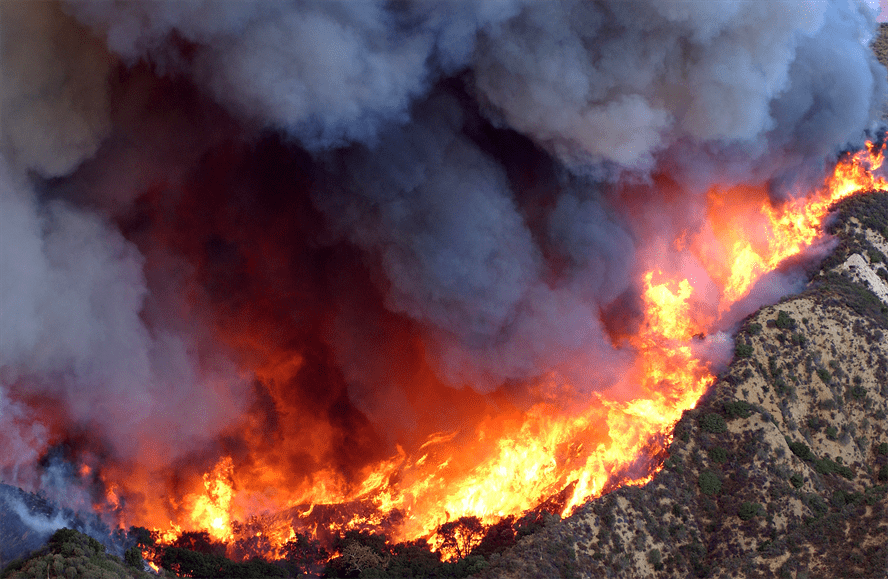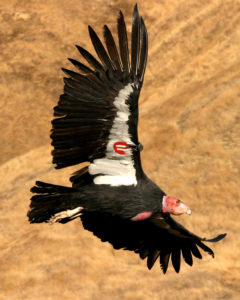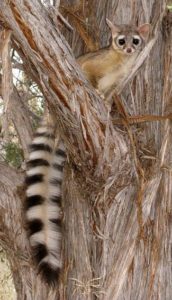We have much more to do and your continued support is needed now more than ever.
Wildfire in a Rapidly Changing World

The fires burning in Southern California are dominating an already full news cycle. Apocalyptic photos of the glowing red hills surrounding Los Angeles freeways and communities seem like CGI imagery from a doomsday movie. Wildfires have always been a natural force shaping California’s rugged landscapes. But even people who have lived with the risks for decades are wondering why this fire season is so catastrophic, and if there is anything that can be done to reduce the threat of megafires in the future.
Dry, strong winds are fueling the flames as they race from the state’s inland deserts and mountains to the coast. Called Santa Ana winds in Southern California and Diablo winds in Northern California, the winds funnel through narrow canyons, building up to speeds of 80 mph. Fires that ignite during these windstorms can spread explosively and are extremely challenging to control. After years of drought that led to massive tree mortality, California benefited from a wet winter. But sky high temperatures in the summer and fall, dry winds, and little rain in recent months has led to extremely dangerous fire conditions. Last winter’s rains may have even contributed to the severity of the fires this year by causing vegetation to grow in greater abundance. Now, that same vegetation is dried out, and adds fuel for the flames.

This perfect storm of fire conditions is not normal. It is, in part, due to a rapidly changing climate, with drought-prone California sitting squarely on the front lines. Hundreds of structures have burned across the state this year, with 5,500 burned in the Napa and Sonoma fires alone. The fires that swept through California’s northern wine country are now the most expensive fires in the state’s history, with insurance claims of $9.4 billion. That dollar figure does not convey the huge emotional toll felt by people who lost homes, pets, and loved ones. The fires that are now devastating southern California range from Santa Barbara and Ventura counties in the north to San Diego in the south, and have destroyed hundreds of structures and forced tens of thousands to evacuate. The Thomas fire in Ventura and Santa Barbara counties has already burned over 100,000 acres, an area larger than the city of Detroit and more than twice the size of Washington, DC.
In 2017, from January 1st through Dec. 3, there have been 6,762 fires that burned 505,391 acres in California. As climate change lengthens fire season and more homes are built in fire-prone areas, the risks of serious wildfires grow. These fires are not only impacting people, but are also harming wildlife. It’s important to note that wildfires are an essential and natural part of the California landscape. Periodic fires clear and rejuvenate overgrown chaparral shrublands and forests, and many species of trees, shrubs, and flowers depend on the heat and nutrients produced by fires for reproduction. In turn, many of California’s wildlife species, such as the California gnatcatcher and rarely seen ring-tailed cat, depend on these fire-maintained habitats. However, the state’s natural fire regimes have been profoundly altered—fueled by climate change, fire suppression practices, and growth of risky developments—with the increasingly severe megafires of today dramatically impacting the state’s natural landscapes and wildlife habitats.

Fire that burns through built-up dead vegetation, caused in part by overly aggressive fire suppression practices, can burn so hot that it damages the root systems that hold soil in place. This can increase the risk of erosion and runoff when rains return. The runoff and associated mudslides can damage the streams, rivers, and lakes that fish and other wildlife depend on. Severe megafires can also burn so hot that they destroy native seed banks, which makes it harder for native vegetation to regenerate following a fire. When native vegetation isn’t able to grow back it leaves habitat more vulnerable to invasive species. Exacerbating all of this and creating a dangerous cycle, massive wildfires also release large quantities of stored carbon into the atmosphere. This carbon further intensifies the impacts of climate change and megafires. California has lost as much as 69 million metric tons of stored carbon between 2001 and 2010 due to wildfires.
The reality is that we live in a rapidly changing world, and part of this change is an increased risk of megafires. In order to minimize these risks, Americans must make a serious commitment to reducing carbon pollution and confronting the climate crisis. Further, land managers should dramatically scale up restoration of our forests and shrublands, and work to restore natural fire regimes to the landscape including through the thoughtful use of controlled burns. Finally, the nation needs a new model to pay for fighting these increasingly extreme and expensive wildfires, so that federal funds allocated for forest restoration and reducing wildfire risks are not siphoned off to cover emergency firefighting expenses.
For more information on the impacts of, and solutions to megafires, see the National Wildlife Federation’s new report Megafires: The Growing Risk to America’s Forests, Communities, and Wildlife.
Urge your representatives to pass the Wildfire Disaster Funding Act!





















